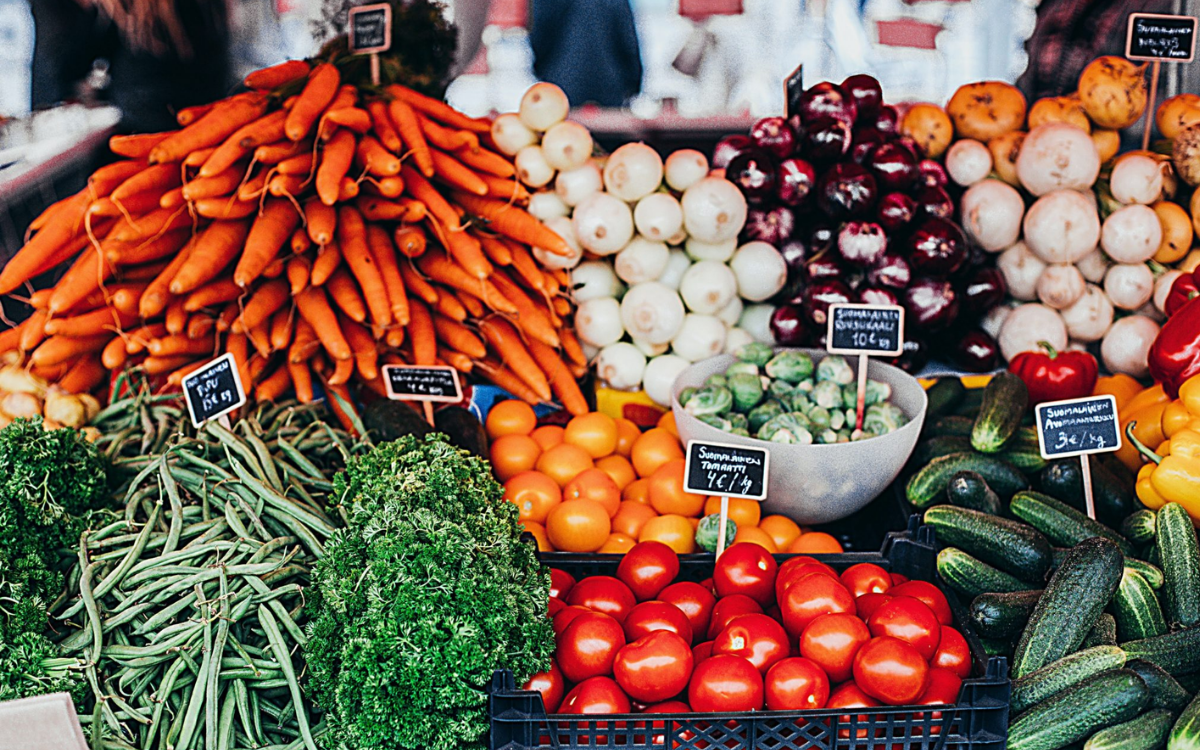
SUSTAINABLE TECH
Beyond the Bag: How to Grocery Shop More Sustainably
By Gemma Gurcak
October 14, 2025
Bringing reusable bags is an excellent start, but there is much more that can be done to make grocery shopping greener. With a few mindful choices, shoppers can support local growers, reduce waste, and lessen their carbon footprint while filling carts with foods that are better for both people and the planet.
Choose Local and Eat Seasonal
Selecting fruits and vegetables grown locally and in season remains one of the most effective ways to shop sustainably. Foods harvested at their natural peak are fresher, more flavorful, and require fewer resources to produce and transport. Seasonal options also tend to provide higher nutritional value while minimizing environmental impact.
Free resources such as the Seasonal Food Guide offer insight into which fruits and vegetables are currently in season by region. Checking these sources before a grocery trip allows for meal planning around locally available produce, creating a shopping experience that is both sustainable and cost-effective. This October, look for fall classics like apples, pears, pumpkins, and sweet potatoes!
Local produce travels shorter distances, lowering transportation emissions and reducing the need for excessive packaging or long-term refrigeration. Supporting nearby farms, farmers markets, and community-supported agriculture programs strengthens local economies and helps build a more resilient food system.
Shop with a Plan
Effective meal planning reduces food waste, limits impulse purchases, and ensures that each item brought home serves a purpose. Planning ahead also saves money and simplifies weekly cooking routines.
Digital tools such as the Kuri app provide support for sustainable and climate-friendly cooking. Kuri helps users create shopping lists, plan meals, and cook with locally sourced and seasonal ingredients, reducing the carbon footprint of everyday meals.
Focus on Whole Foods
Meals built around whole ingredients such as fruits, vegetables, grains, beans, and nuts result in less packaging waste and healthier dietary choices. Whole foods typically have a smaller environmental footprint and promote a more natural, balanced approach to eating.
Add More Plants to the Plate
Even modest shifts toward plant-based eating can make a measurable difference. Reducing the consumption of meat and dairy helps lower greenhouse gas emissions and supports a more sustainable global food system. Introducing one or two plant-based meals per week is an achievable way to begin.
Support Responsible Brands
Selecting packaged products from companies that value sustainability can drive positive change across industries. Certifications such as Fair Trade, Rainforest Alliance, and USDA Organic indicate ethical sourcing and environmentally responsible production. Choosing brands that prioritize sustainability encourages transparency and responsible business practices.
Every Choice Makes a Difference
Sustainable shopping is not about perfection but about consistency. Each mindful decision, from what is purchased to how it is purchased, contributes to a larger collective impact. Shopping with intention helps create a healthier planet and a more sustainable future for all. Happy shopping this fall and, of course, remember your reusable bags!





Leave A Comment